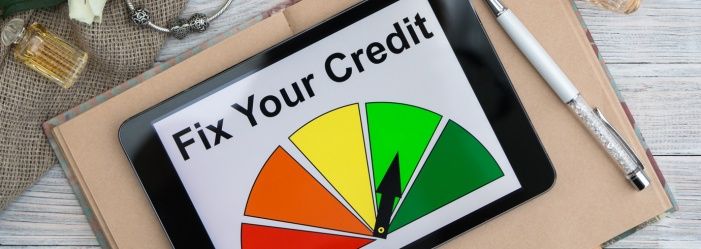Last Updated: April 1, 2024
Building Scores After Settlement

Disclaimer: We are not qualified legal or tax professionals and are not giving advice. Always speak with a qualified professional before making any legal or financial decisions.
Pacific Debt Relief is not a credit repair organization nor does our program aim to improve your credit score. The information below is for educational purposes to help consumers make informed decisions as it relates to credit and debt.
Rebuilding your credit after going through debt settlement may seem daunting, but it's far from impossible. With a strategic approach and disciplined financial habits, it's entirely feasible to restore your credit score and regain financial health.
In this guide, we'll walk you through 10 essential steps to rebuild your credit effectively, from regularly monitoring your credit report to leveraging credit-building tools.
Each step is designed to address specific aspects of your credit profile, ensuring a comprehensive recovery plan. Let's embark on this journey towards financial resilience together
Don't delay your debt solution. Click here to speak directly to a debt specialist for free.
How Debt Settlement Affects Your Credit Score
When you decide to settle your debt, there are a couple of factors that will negatively affect your credit score. First, your bills are probably being paid late, or they might not be getting paid at all, so those late or missing payments are reported to the credit agencies, affecting your score.
Second, your debts are often reported as “settled” and that typically lowers your credit rating a bit. If you do not pay your debts, they may be charged off (sold to a third party), and that affects your rating as well.
Don’t despair. There are several steps you can take to repair your credit rating. We’ll look at each one in no particular order. In fact, you can do most of these simultaneously.
Credit Repair
Credit repair involves getting copies of every credit report and fixing any errors they may include. There are three main agencies: Transunion, Equifax, and Experian, and several smaller companies. Start with the big three.
As you receive copies of your credit report, check to see how your settled debts are labeled. The hit to your credit is worse if they are ‘charged off’ instead of ‘settled charge off.’ It will take some time, effort, and letters to get this changed, but it can be done. Once your debts are correctly labeled, you may be able to request that settled accounts be removed from your credit report.
If there are errors, dispute them. Occasionally, old accounts are not removed from your credit score. For instance, if you had a foreclosure more than seven years ago, it should be removed. Correcting small errors can help improve your scores fairly quickly.
You can get one copy free once a year from annualcreditreport.com
Pay Bills On-time
Pay your bills in full and on time. This simple and very important action is worth roughly 35% of your credit score! Timely payments mean that you are using credit responsibly and that makes credit agencies very happy. Set reminders, ask to have due dates changed to more financially advantageous dates, maintain a budget – do whatever you need to show that you are being responsible.
Secured Credit Cards
If you’ve gotten in the habit of overusing your credit card, take out a secured credit card. These cards have a credit limit backed by an upfront cash deposit you make before receiving the credit card. If you miss a payment, it comes out of the cash reserve. If you make the payments in full, it improves your credit report. Plus, the discipline will help you maintain a budget.
Calculate Your Debt-to-Income Ratio
The Debt to Income Ratio (DTI) is figured by dividing your monthly debt payments by your gross monthly income. The math is relatively simple.
Front-End DTI: Take your mortgage (principal, interest, insurance, property tax) or rent costs and divide by your gross monthly income – the entire amount you make before taxes are taken out. Multiply that number by 100 to get a percentage. Your front-end DTI should be less than 31%.
Front-End DTI Example
$1000 mortgage/ $1500 income = .66 x 100 = 66%
Back-End DTI: Add all your monthly debt payments including rent/mortgage (property taxes, and insurance payments), car loan/lease, revolving and installment credit (credit cards), and legal liability payments like child support, alimony, and tax payments. Divide this sum by your gross monthly income and multiply by 100. Your back-end DTI should be less than 44%.
Savings to Income Ratio: Add together all your monthly savings such as retirement, investment, and regular savings plans by your gross income. Multiply by 100. Your STI should be 10%.
Monthly Cash Flow: add together all monthly expenses, divide that by your gross income, and multiply by 100. This number should be 100% or less. If it is more, you are spending more than you are bringing in.
Once you have these four numbers, you can see where you need to make adjustments to live within your means. This fairly simple math will help you to improve your credit rating indirectly.
How Long Does It Take to Rebuild Credit?
How long it takes to rebuild your credit and improve your credit score after debt settlement depends on how your credit was before you started the debt settlement program. If your credit is thin (not much on it) or poor, it may take two years to see improvements, if you use your credit wisely and pay your debts on time.
Should I Settle or Pay Debts in Full?
If you can, always pay your debts in full. If you are in debt for more than $10,000 of unsecured debt and you are having trouble making even minimum payments, settlement may be your best possible option.
Consider a Credit Builder Loan
In addition to a secured credit card, a credit builder loan can help establish payment history. These loans function differently than regular loans. The loan amount is held in a savings account while you make monthly payments. Payments are reported to Experian, Transunion, and Equifax. After completing monthly payments over 1-2 years, you receive the money that was held in savings.
Credit builder loans avoid the risk of overspending that comes with credit cards. And your payment history helps build your credit profile. Some companies that offer credit builder loans include:
- Self Lender
- Credit Strong
- SeedFi
While interest rates and terms vary, aim for loans that charge 15% APR or less. Paying on time is crucial, so make sure the monthly payment fits comfortably in your budget. Credit builder loans take discipline, but are affordable ways to establish good payment history.
FAQs
Conclusion
Reestablishing good credit after debt settlement takes diligence across multiple aspects of your financial life. Pay all bills on time, keep credit card balances low, clean up your credit reports, and leverage products like secured cards and credit builder loans. Improving your credit score to over 700 is achievable within 1-2 years if you stay committed to responsible behaviors.
While the process takes time, the long-term rewards make it worthwhile. Good credit saves you money through better interest rates and financial flexibility. Perhaps most importantly, it provides peace of mind knowing you are in control of your financial life after overcoming past struggles with debt.
Stay patient, stick to financial basics, keep an eye on your progress, and let time work in your favor. Reach out with any other questions on effectively rebuilding your credit in the months and years ahead.
*Disclaimer: Pacific Debt Relief explicitly states that it is not a credit repair organization, and its program does not aim to improve individuals' credit scores. The information provided here is intended solely for educational purposes, aiding consumers in making informed decisions regarding credit and debt matters. The content does not constitute legal or financial advice. Pacific Debt Relief strongly advises individuals to seek the counsel of qualified professionals before undertaking any legal or financial actions.
How Pacific Debt Can Help
Pacific Debt Inc. is one of the leading debt settlement companies in the US. We can help you understand your options and whether or not debt settlement is your best option. If it is not, we will refer you to a trusted partner who may be more appropriate for your specific situation.
If you’d like more information on debt settlement or have more than $10,000 in credit card debt that you can’t pay, contact Pacific Debt, Inc. We may be able to help you become debt-free in 2 to 4 years. We have settled over $250 million in debt for our customers since 2002.
Once you’ve completed our debt settlement program, your financial situation should start to improve. You’ll then be able to take the money you once had to pay towards your debt, and be able to use it for other purposes like saving it, investing, retirement, down payments, etc.
Pacific Debt, Inc is accredited with the Consumer Debt Relief Initiative (CDRI) and is an A+ member of the Better Business Bureau. We rate very highly in Top Consumer Reviews, Top Ten Reviews, Consumers Advocate, Consumer Affairs, Trust Pilot, and US News and World Report.
Pacific Debt is currently providing debt relief coverage in the following states:
Alabama, Alaska, Arizona, Arkansas, California, Colorado, District of Columbia, Florida, Idaho, Indiana, Kentucky, Louisiana, Massachusetts, Maryland, Michigan, Minnesota, Missouri, Mississippi, Montana, North Carolina, Nebraska, New Mexico, New York, Oklahoma, Pennsylvania, South Dakota, Texas, Utah, Virginia, Wisconsin
* Other states can be connected to one of our trusted partners
For more information, contact one of our debt specialists today. The initial consultation is free, and our debt experts will explain to you all your options.
Pacific Debt Relief is not a credit repair organization nor does our program aim to improve your credit score. The information below is for educational purposes to help consumers make informed decisions as it relates to credit and debt.
RELATED POSTS
- The 5 Main Credit Score Factors You Need To Know (November 23, 2020)
- How To Do A Credit Card Balance Transfer (November 4, 2020)
- The 8 Best Apps for Monitoring Your Credit Score (October 12, 2020)
- What You Should Do If You Experience a Data Breach (September 24, 2020)
- Pacific Debt Inc Rated One of the Best Debt Settlement Companies of 2020 (February 13, 2020)
- How To Get Debt Consolidation Loans For Bad Credit Scores
How To Get Debt Consolidation Loans For Bad Credit Scores Success Story from Lisa
Reduce Your Credit Card Debt By Up to Half

BBB Reviews | 4.9/5.0 Rating









 Do Not Sell My Personal Information
Do Not Sell My Personal Information